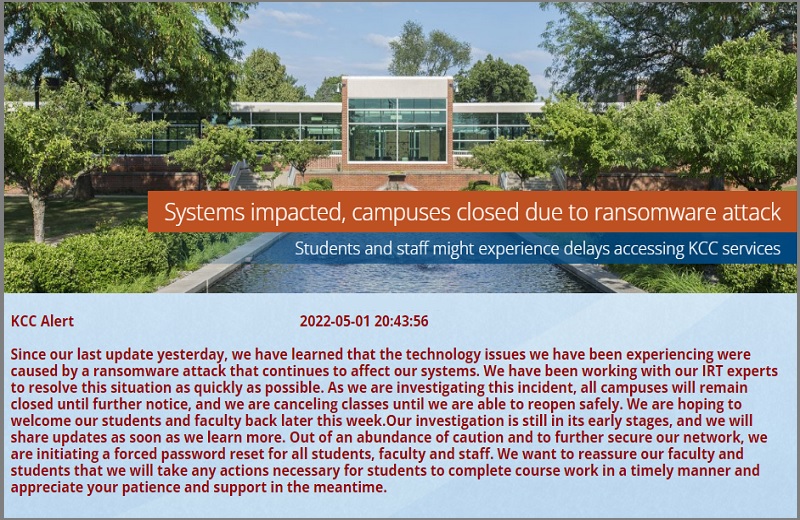Understanding the Mower County Ransomware Attack
In a world that is becoming increasingly reliant on digital systems, cyber threats are growing in both frequency and sophistication. The recent ransomware attack on Mower County serves as a powerful reminder of the vulnerabilities that exist within even the most essential public services. This incident highlights the critical need for robust cybersecurity measures and a deeper understanding of how such attacks occur.
What Happened?
Mower County, a region known for its community-driven approach, became the target of a malicious ransomware attack. This breach disrupted vital operations, causing significant challenges for residents and local businesses. The attackers managed to infiltrate the county’s systems, encrypting crucial data and demanding a substantial ransom in exchange for access. As a result, essential services such as resident records, tax information, and other key processes were effectively locked out, creating a state of emergency for the county.
Immediate Impact of the Attack
The consequences of the ransomware attack were far-reaching:
- Suspension of Services: Many essential services were temporarily halted, leading to confusion and inconvenience for the local population.
- Financial Strain: The county faced potential financial losses not only from the ransom demand but also from the costs associated with data recovery and system restoration.
- Operational Downtime: The attack caused extensive downtime, affecting productivity and resulting in a backlog of services once operations resumed.
The Growing Threat of Ransomware
Ransomware attacks have become increasingly common, with cybercriminals employing more sophisticated methods to exploit vulnerabilities. Understanding how these attacks operate is essential for developing effective defense strategies.
How Ransomware Works
Ransomware typically gains entry through phishing emails or by exploiting software vulnerabilities. Once inside a network, the malware encrypts important data, rendering it inaccessible until a ransom is paid. The process usually involves three main steps:
- Infiltration: Attackers use various techniques, such as phishing or exploiting system weaknesses, to gain access to a network.
- Encryption: Critical data is encrypted, making it unusable for the affected organization.
- Extortion: A ransom is demanded in exchange for the decryption key, often in cryptocurrency to avoid traceability.
Why Government Entities Are Targets
Government entities, like Mower County, are particularly attractive targets due to the sensitive data they hold and often limited cybersecurity resources.
- Data Sensitivity: These organizations manage vast amounts of personal and confidential information, making them valuable targets for cybercriminals.
- Budget Constraints: Limited funding can restrict the ability to invest in advanced cybersecurity solutions.
- Public Pressure: The need to maintain uninterrupted public services may lead to quicker decisions to pay ransoms, further incentivizing attackers.
Cybersecurity Insights and Preventive Measures
To combat the rising threat of ransomware, organizations must adopt comprehensive cybersecurity strategies. Here are several key insights and measures:
Regular Backups
One of the most effective ways to mitigate the impact of a ransomware attack is through regular and secure backups.
- Frequency: Ensure that data is backed up regularly to minimize potential data loss.
- Storage Location: Store backups offline or in a secure cloud environment to prevent them from being compromised.
Employee Training
Human error is a primary entry point for ransomware. Training employees can significantly reduce this risk.
- Phishing Awareness: Educate staff on recognizing phishing attempts and suspicious communications.
- Incident Response: Establish clear protocols for responding to suspected attacks, ensuring a swift and coordinated response.
Updating and Patching
Outdated software can create vulnerabilities that cybercriminals exploit.
- Regular Updates: Keep all software up to date to address known security issues.
- System Audits: Conduct routine audits to identify and resolve security gaps.
Advanced Security Solutions
Investing in advanced cybersecurity tools can provide a strong defense against potential threats.
- Firewall and Encryption: Implement firewalls and encryption to protect data integrity.
- Intrusion Detection Systems: Use IDS to monitor network activity and detect suspicious behavior.
Conclusion
The Mower County ransomware attack serves as a critical lesson in the importance of robust cybersecurity measures. As digital systems continue to evolve, so too do the threats that accompany them. Organizations must remain vigilant, adopting proactive strategies to protect their data and ensure the continuity of essential services. Whether through regular backups, employee training, or the implementation of advanced security solutions, the need for continuous improvement in cybersecurity has never been more urgent. In this digital age, cybersecurity is not just a choice—it is a necessity that demands ongoing attention and adaptation.







